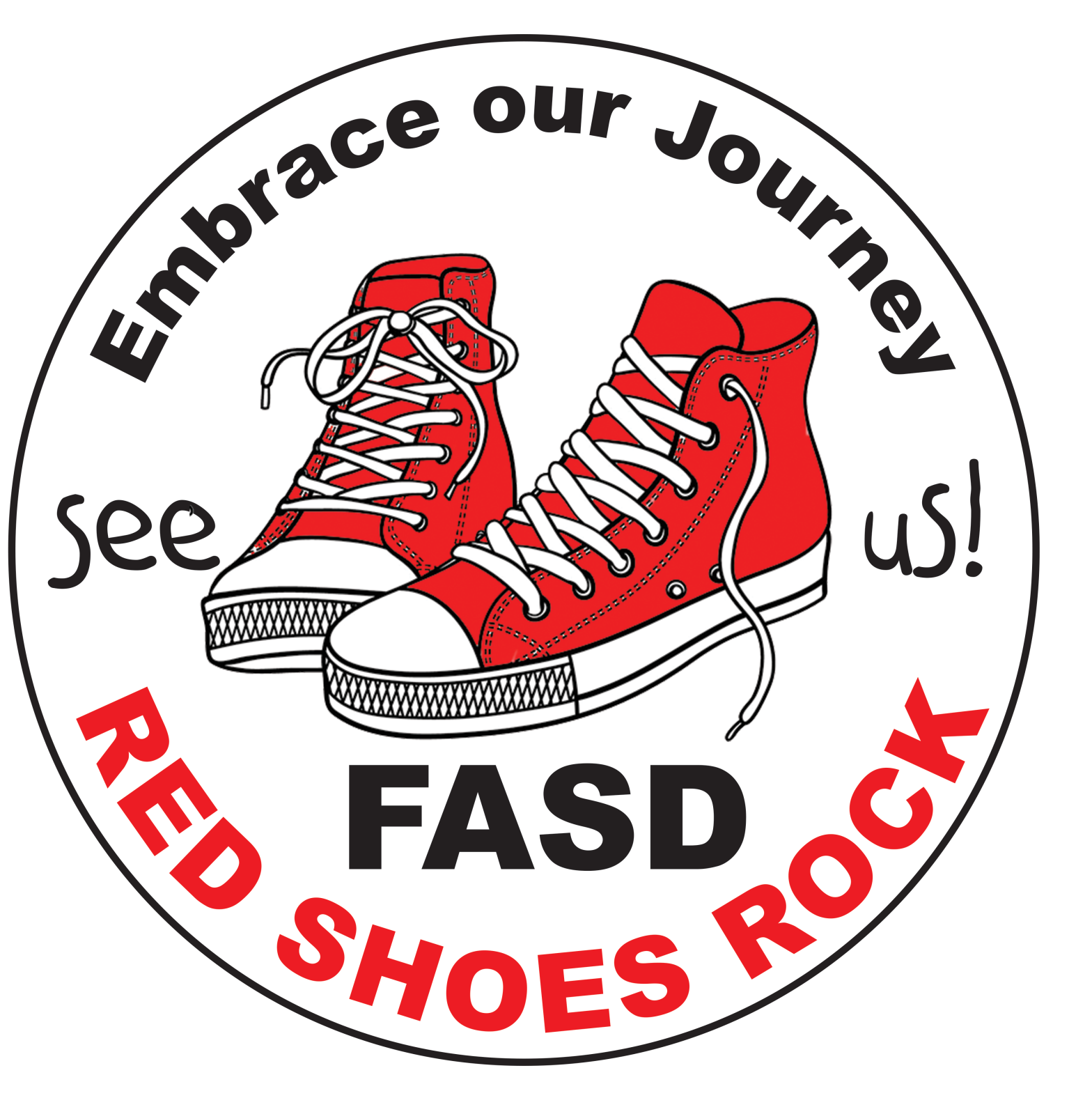Please send Red Shoes Rock your FASD Light Up for 2024!
WHY IS RED SHOES ROCK CHALLENGING YOU TO SHINE!
Join us in launching and celebrating lighting up awareness for fetal alcohol spectrum disorders (FASD) June 1 - September 9
E = EDUCATION DEVELOPMENTAL FLUIDITY
Why did we create Red Shoes Rock
The Red Shoes Rock FASD Aware social initiative was created to further raise awareness and understanding of fetal alcohol spectrum disorders (FASDs) in a unique and engaging way. The initiative aims to unite individuals and organizations in a visible and powerful symbol of support for those affected by FASDs. The choice of red shoes asContinue reading "Why did we create Red Shoes Rock"
90 More Ideas for FASDay Preparation
International FASDay arrives on the 9th month on the 9th hour on the 9th minute as bells ring out with a moment of silence around the world. And concludes as the sunsets around the world as landmarks light up in RED. The International Red Shoes Rock FASD Aware Alliance is a world-wide group of grassrootContinue reading "90 More Ideas for FASDay Preparation"
RED SHOES ROCK CHALLENGES THE WORLD TO SHINE!
The Red Shoes Rock initiative is challenging the world to light up public spaces and bridges on FASDay (Fetal Alcohol Spectrum Disorders Awareness Day) September 9, 2024, for several reasons. Visibility and Awareness: Lighting up public spaces and bridges in a red hue attracts attention and creates a visual reminder of the significance of FASD.Continue reading "RED SHOES ROCK CHALLENGES THE WORLD TO SHINE!"
How do I engage assistance for FASDay?
When engaging authorities or organizations in promoting Fetal Alcohol Spectrum Disorder (FASD) awareness, offering assistance can make your proposal more appealing and show your commitment to the cause. Here are several ways you can offer assistance: 1. Technical Support: Lighting Arrangements: If proposing to light up public buildings or landmarks, offer to assist with technicalContinue reading "How do I engage assistance for FASDay?"
Schedule Your 2024 #LightFASDawareness Events
A structured schedule for following up and reminding authorities or organizations about Fetal Alcohol Spectrum Disorder (FASD) awareness initiatives can help maintain communication and keep the cause on their radar. Here's a suggested timeline: Initial Contact: Day 1: Initial Proposal or Contact Send the initial proposal or reach out to authorities/organizations with your request orContinue reading "Schedule Your 2024 #LightFASDawareness Events"
IDEAS ABOUT FASD FOR YOUR PROPOSAL
Fetal Alcohol Spectrum Disorder (FASD) is a lifelong condition caused by prenatal exposure to alcohol. It encompasses a range of physical, cognitive, behavioral, and learning disabilities that can affect individuals differently. Here's an overview of FASD, its prevalence, and its impact: What is FASD? Spectrum Disorder: FASD is a spectrum disorder, meaning it manifests inContinue reading "IDEAS ABOUT FASD FOR YOUR PROPOSAL"
How do I get the “Lights ON”
Lighting up public buildings and landmarks for a cause like Fetal Alcohol Spectrum Disorder (FASD) Awareness Day, on September 9th, involves coordination, communication, and community involvement. Here's a step-by-step guide to making it happen: 1. Identify Key Contacts: Reach out to government officials, city councils, or facility management teams responsible for public buildings and landmarks.Continue reading "How do I get the “Lights ON”"







